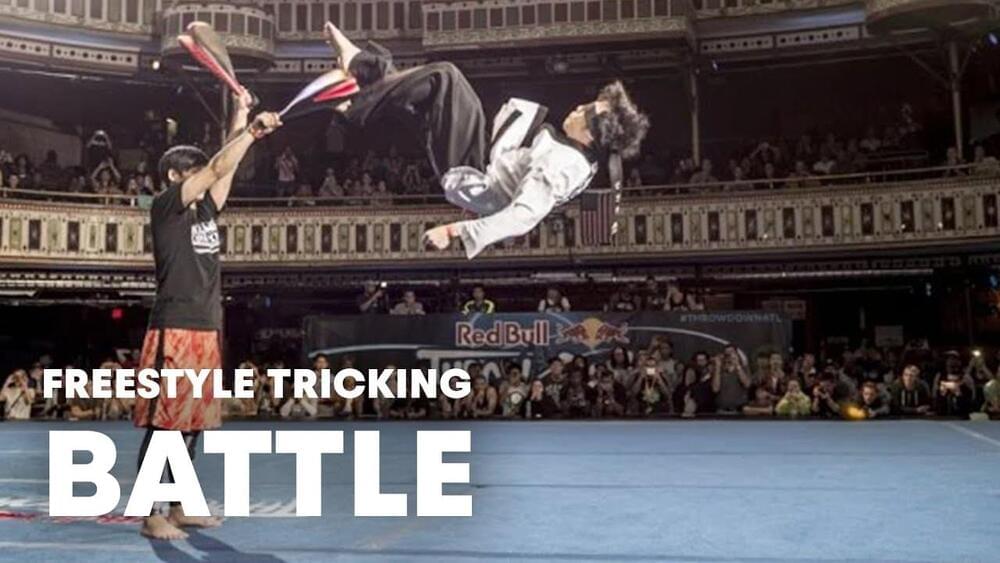Jun 10, 2023
SpaceX Set To Hire 14 Year Old Genius Smarter Than Billions Of People
Posted by Genevieve Klien in category: internet
SpaceX set to bring child prodigy on board as a software engineer for its Starlink division in July. Take a look!
SpaceX set to bring child prodigy on board as a software engineer for its Starlink division in July. Take a look!
Reels started as Instagram’s solution for competing with TikTok and soon launched on sister-site Facebook — a natural expansion. Meta is now testing Reels on a less expected medium: the Meta Quest. Its VR headset works for internet browsing, watching movies, games and more — but the addition of typically-vertical Reels presents a different viewing experience than these more malleable (and typically screen-wide) options.
Meta founder and CEO Mark Zuckerberg announced the update through a 13-second video on Meta’s Instagram Channel. It featured a Reel from influencer Austin Sprinz’s Instagram account in which he visited the world’s deepest pool. The immersive video is a good choice for VR, taking the viewer underwater into a seemingly bottomless space — and is certainly better than a cooking or dance Reel.
The Reels update comes ahead of Meta Quest 3’s fall release and follows Apple’s new AR/VR Vision Pro headset announcement. Though, with Quest 3’s pricing starting at $499, compared to the Vision Pro’s $3,499, the pair don’t exactly fall into the same category. Meta’s VR headset line first launched as Oculus Quest and subsequently Oculus Quest 2 before the second-generation model was rebranded as Meta Quest 2. The Meta Quest Pro followed soon after the name change. As for Reels, there’s no timeline for if and when it will leave the testing phase and become available across Meta Quest headsets.

As biological singularity genes grow so will leisure activities grow and blossom. Even now tricking is a show of the real human potential in movement. Just shows us that the future is much brighter everyday with new activities that push the human potential and humans will have even greater heights of human abilities when the biological singularity genes can make us soar to new abilities.
Sixteen of the best tricking athletes came to Atlanta and battled head to head for the winning title.
Continue reading “Freestyle Tricking Battle | Red Bull Throwdown 2014” »
“Intelligence supposes goodwill,” Simone de Beauvoir wrote in the middle of the twentieth century. In the decades since, as we have entered a new era of technology risen from our minds yet not always consonant with our values, this question of goodwill has faded dangerously from the set of considerations around artificial intelligence and the alarming cult of increasingly advanced algorithms, shiny with technical triumph but dull with moral insensibility.
In De Beauvoir’s day, long before the birth of the Internet and the golden age of algorithms, the visionary mathematician, philosopher, and cybernetics pioneer Norbert Wiener (November 26, 1894–March 18, 1964) addressed these questions with astounding prescience in his 1954 book The Human Use of Human Beings, the ideas in which influenced the digital pioneers who shaped our present technological reality and have recently been rediscovered by a new generation of thinkers eager to reinstate the neglected moral dimension into the conversation about artificial intelligence and the future of technology.
A decade after The Human Use of Human Beings, Wiener expanded upon these ideas in a series of lectures at Yale and a philosophy seminar at Royaumont Abbey near Paris, which he reworked into the short, prophetic book God & Golem, Inc. (public library). Published by MIT Press in the final year of his life, it won him the posthumous National Book Award in the newly established category of Science, Philosophy, and Religion the following year.
Passengers of Singapore Airlines can now stay connected to free internet at an altitude of 12,000 meters.
In simpler times, during a flight journey, one could switch off the cellular, read a good or a bad book, enjoy a glass of questionable wine, watch a movie in a different language using the in-flight entertainment system, or simply nod off. Or one could even dare to converse with a fellow passenger (gasp).
And now, more and more airlines have… More.
Continue reading “Singapore Airlines announces free Wi-Fi for all passengers” »
Hallucination!

Can “hallucinations” generate an alternate world, prophesying falsehood?
As I write this article, NVIDIA(• is surpassing Wall Street’s expectations. The company, headquartered in Santa Clara, California, has just joined the exclusive club of only five companies in the world valued at over a trillion dollars [Apple (2.7T), Microsoft (2.4T), Saudi Aramco (2T), Alphabet/Google (1.5T), and Amazon (1.2T)], as its shares rose nearly 25% in a single day! A clear sign of how the widespread use of Artificial Intelligence (AI) can dramatically reshape the technology sector.
Intel has announced an ambitious plan to develop scientific generative AIs designed with one trillion parameters. These models will be trained on various types of data, including general texts, code, and scientific information. In comparison, OpenAI’s GPT-3 has 175 billion parameters (the size of GPT-4 has not yet been disclosed by OpenAI). The semiconductor company’s main focus is to apply these AIs in the study of areas such as biology, medicine, climate, cosmology, chemistry, and the development of new materials. To achieve this goal, Intel plans to launch a new supercomputer called Aurora, with processing capacity exceeding two EXAFLOPS(*•, later this year.
Article by John Gao, President of 5.5G Domain, Huawei
As industries increasingly lean on new digital technologies to streamline operations, digital twins are being used by business to generate complete and dynamic overviews of their assets and their processes. The Internet of Things (IoT) is key to realizing this vision. Following 80 years of development, RFID technology, which offers low cost and zero power consumption, is currently the most widely used technology in the retail and logistics industries that enables this. However, this technology application scenarios are limited. It is hampered by the very short distance it can transmit its signal, is relatively expansive to integrate and is not very advanced when it comes to automation.
By reducing costs and the need for labor, a passive IoT solution could make sensor networks far more economically viable. Passive IoT technologies could support two key IoT application scenarios and disrupt current logistics best practice and business operations. Passive IoT technologies could make sensor networks far more economically viable, while dramatically increasing the efficiency of warehouse stocktaking and other industrial processes by tracking hundreds of thousands of items over a 200m2 area in real time.
Will the emergence of AI personal assistants end ‘search’ and other ways we access the Internet? Bill Gates believes so.
Read more about SpaceX launches 22 second-generation Starlink satellites into orbit on Devdiscourse.
One novel approach — that some experts say could actually work — is to use metadata, watermarks, and other technical systems to distinguish fake from real. Companies like Google, Adobe, and Microsoft are all supporting some form of labeling of AI in their products. Google, for example, said at its recent I/O conference that, in the coming months, it will attach a written disclosure, similar to a copyright notice, underneath AI-generated results on Google Images. OpenAI’s popular image generation technology DALL-E already adds a colorful stripe watermark to the bottom of all images it creates.
“We all have a fundamental right to establish a common objective reality,” said Andy Parsons, senior director of Adobe’s content authenticity initiative group. “And that starts with knowing what something is and, in cases where it makes sense, who made it or where it came from.”
In order to reduce confusion between fake and real images, the content authenticity initiative group developed a tool Adobe is now using called content credentials that tracks when images are edited by AI. The company describes it as a nutrition label: information for digital content that stays with the file wherever it’s published or stored. For example, Photoshop’s latest feature, Generative Fill, uses AI to quickly create new content in an existing image, and content credentials can keep track of those changes.
